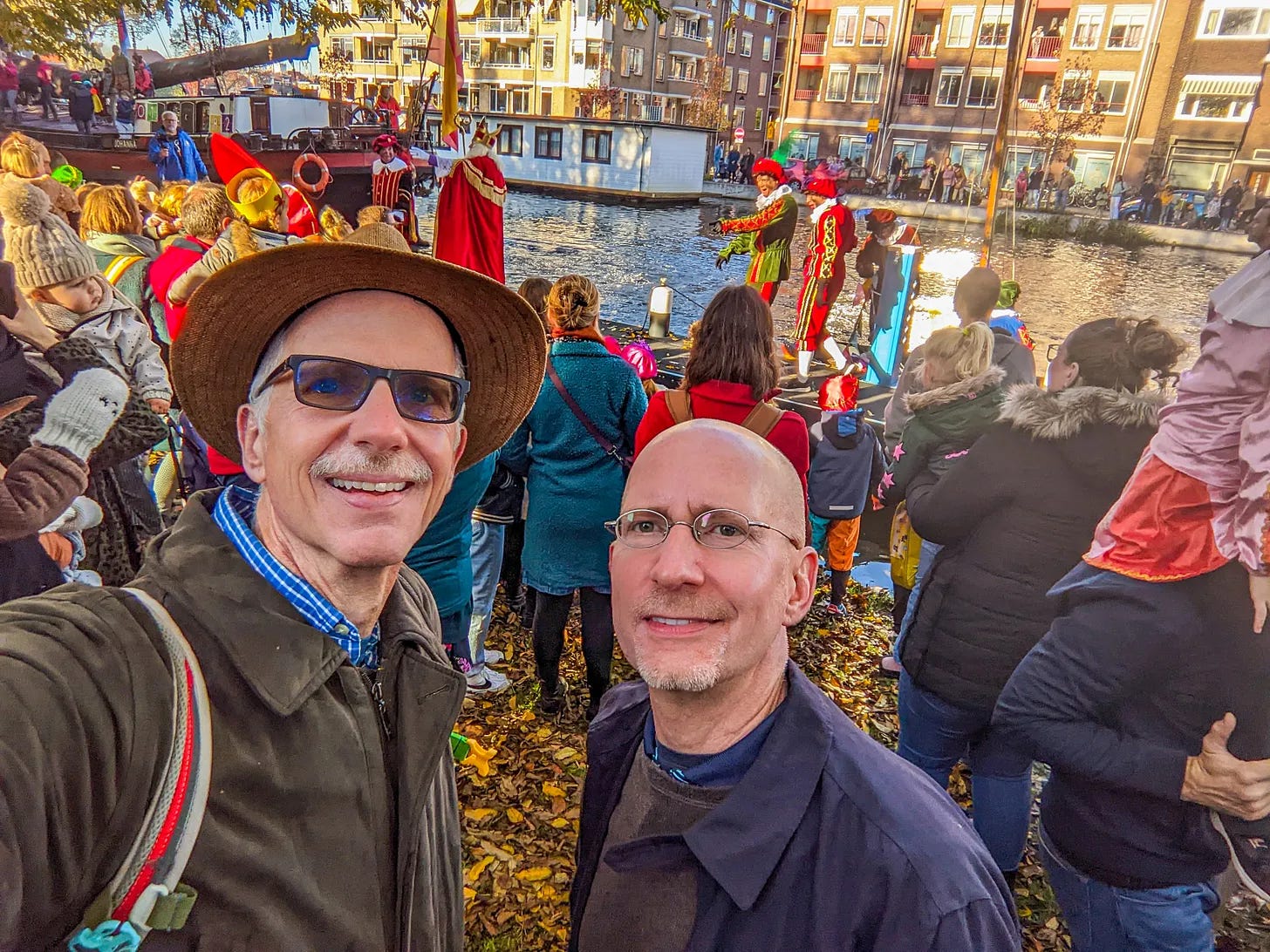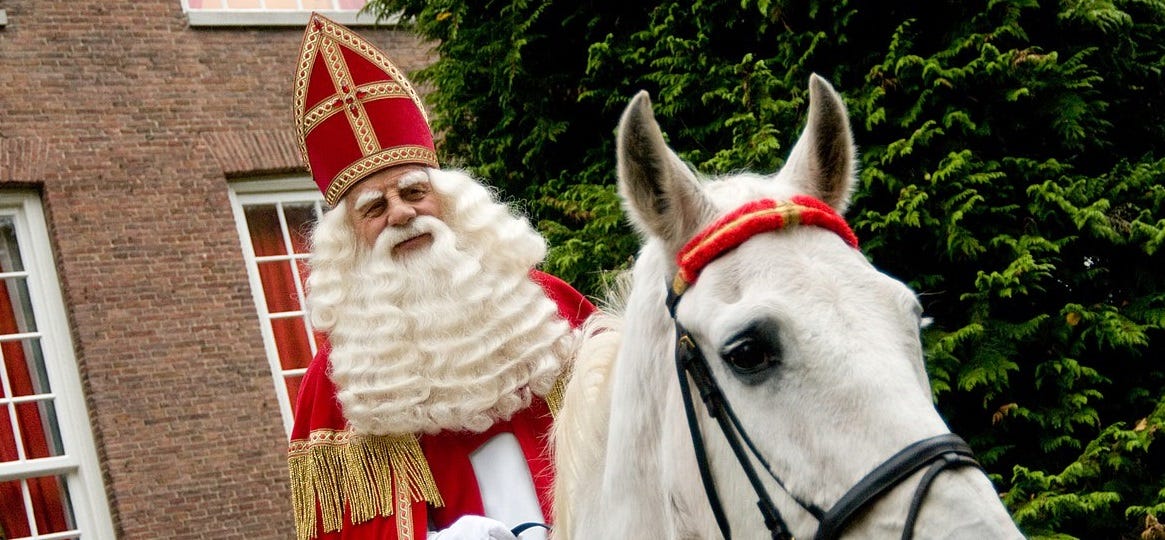Sinterklaas Came to Town — and He Carried a Lot of Baggage Along with his Bag of Toys
Living in the Netherlands, we got to see the arrival of this Santa Claus-like figure. But we also learned all about the big "blackface" controversy.
For the audio version of this article, go here.
Last month, when we were living in Gouda, the Netherlands, the Dutch Santa Claus figure known as Sinterklaas came to town, and Michael and I got to watch his arrival in a huge boat at the dock along a canal — from “Spain,” according to local legend.
He brought with him a fair bit of joy for both children and their parents — and also not a little controversy.
Actually, rather than saying Sinterklaas is “the Dutch Santa Claus,” it’s more accurate to say that Santa Claus is the American version of Sinterklaas, since Santa is based, in part, on this Dutch tradition — “Santa Claus” is simply an Anglicized version of “Sinterklaas.”
Both Sinterklaas and Santa Claus are based on the actual historical figure of Saint Nicholas, who lived in the third and fourth centuries and supposedly made a habit of giving secret cash gifts to the poor.
Sinterklaas is both a person and a day — December 6th, which is also the Feast of Saint Nicholas, a religious holiday. In the Netherlands, the night before is when Sinterklaas leaves gifts for good children. (More gifts are given on Christmas Day, but those gifts are acknowledged to be from parents to their children.)
But Sinterklaas arrives in the Netherlands — and in Belgium, Luxemburg, northern France, Hungary, and certain former Dutch territories — on the first Saturday after November 11th.
He arrives on that ship from Spain, where he lives, accompanied by his helpers, Zwarte Piet, or “Black Pete” — which you should remember, because it will come up again later in this article.
And when I say Sinterklaas “arrives on that ship,” I mean an actual giant ship. Take a look at the arrival we witnessed:
Why does he supposedly come from Spain? The explanations vary, but it might be as simple as the fact that mandarin oranges have long been associated with Christmas gift-giving, and these oranges were known to be from Spain, so therefore Sinterklaas must live in Spain.
He also rides a white horse — one specific horse, which even has a name in the Netherlands: Amerigo until 2019, when he “retired,” and now Ozosnel.
In the Netherlands, there is one “main” arrival, which is broadcast on Dutch TV, in a different place every year — in 2022, it was Hellevoetsluis. Then, later in the day, Sinterklaas arrives in other towns, like Gouda, where we were staying.
After arriving via boat, Sinterklaas disembarks and rides around town on his horse, throwing candy and cookies to the crowd. He’ll then spend the next few weeks visiting schools, hospitals, and shopping malls.
On the night of December fifth, Sinterklaas and Black Pete deliver gifts to good children in burlap sacks which are hidden somewhere in the house — Black Pete leaves a note saying where it is. Or perhaps Black Pete will knock on the door, and the sack will be outside. Children often leave a carrot or hay in their shoes for Sinterklaas’ beloved horse.
All in all, it’s a fascinating tradition — much more region-specific than the Santa Claus story, which is maybe why it seems richer to me.
The spectacle was also genuinely impressive. All the people and music and pageantry! And I’ve seen many an American Santa over the course of my life and, increasingly, it seems like American Santas can’t even be bothered to phone it in. Is the beard supposed to look so incredibly bad? Are we doing Santa ironically now too?
Meanwhile, take a look at this recent Sinterklaas on his horse:
Even better, it was great to see how the ceremony brought the community out and together. Thanks to Covid, 2022 was Sinterklaas’ first in-person arrival in three years. (The last few years, his arrival was shown on television.)
The children really loved it, many of them dressed up in little homemade Black Pete costumes — his trademark Renaissance pageboy outfit and a jaunty feathered cap. And the parents all basked in the happy glow of their children.
Because this is the Netherlands, Sinterklaas’ boat even had a gay Black Pete waving a rainbow flag.
But.
There has to be a “but,” doesn’t there? And I suspect you know what’s coming.
Remember when I said to remember Black Pete? For the last decade or so, the character has been the center of an absolutely raging controversy in the Netherlands over whether the character — who may or may not be Black but is definitely performed in blackface — is racist.




